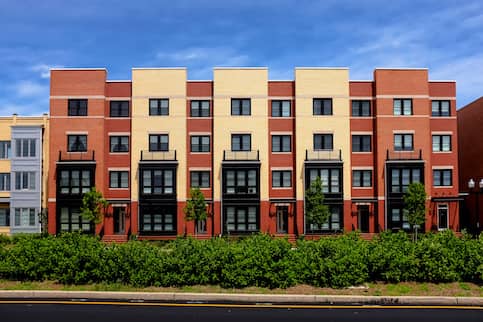Condo HOA and Community Events: Building Stronger Connections
Condo HOA and Community Events: Building Stronger Connections
Blog Article
Exactly How Condominium HOA Regulates Shared Areas and Improves Community Consistency
The administration of shared rooms within a condominium organization plays a critical function in fostering neighborhood communication and preserving home worths. With the facility of thorough guidelines, the Condominium HOA not only controls the usage of communal facilities yet likewise advertises a culture of respect and liability among citizens.
Role of the HOA
The house owners organization (HOA) works as the controling body for condo communities, playing a critical role in preserving the property and promoting a cohesive living setting. It is responsible for applying and enacting neighborhood policies and laws, which are designed to protect the visual worth and capability of the common space. This governance makes sure that all homeowners comply with a standardized set of expectations, promoting a sense of unity among varied house owners.
In Addition, the HOA takes care of the financial aspects of the community, including budgeting, collecting dues, and preserving common areas. This monetary oversight is important in making certain that needed maintenance and enhancements are accomplished quickly, improving residential property worths gradually. The HOA likewise functions as a liaison between locals and external entities, such as city government and provider, attending to common worries efficiently.
Additionally, the HOA commonly organizes neighborhood occasions and programs, encouraging neighborly interactions and developing relationships amongst locals. By assisting in open interaction and resolving grievances, the HOA contributes to a harmonious living environment. Hence, its diverse role is important in ensuring the smooth procedure and general complete satisfaction within condo neighborhoods.
Guidelines for Shared Spaces
Reliable governance in condo neighborhoods necessitates clear regulations for shared rooms, which are crucial for maintaining order and advertising a sense of area among residents. These policies act as standards that guarantee every person can take pleasure in common locations, such as pools, gardens, and entertainment facilities, without conflict.

Furthermore, sanitation and maintenance requirements are important, usually stating that homeowners should tidy up after themselves and report any type of problems to the homeowners' association. By plainly communicating these assumptions, the HOA can urge and reduce misconceptions regard among locals.
Eventually, well-defined policies for common spaces contribute to the general top quality of life in a condominium neighborhood, enabling homeowners to coexist quietly while enjoying the facilities that improve their living experience. condo hoa.
Relevance of Community Guidelines
Neighborhood standards play a substantial duty in fostering a cohesive and respectful setting within condo organizations. These standards develop clear assumptions for residents, promoting a feeling of liability and shared duty. By marking appropriate actions and techniques, area standards assist avoid misunderstandings and disputes amongst citizens.
Moreover, these guidelines work as a framework for maintaining the practical and aesthetic integrity of common rooms. They make certain that all homeowners follow requirements pertaining to residential property upkeep, sound degrees, and usage of common facilities. official statement This harmony not just improves the aesthetic allure of the area yet likewise adds to overall home values, profiting all house owners.

Dispute Resolution Techniques
Navigating problems within a condominium association calls for a structured approach to make certain reasonable and efficient resolution. Effective problem resolution approaches commonly begin with open communication, urging locals to voice issues in a respectful fashion. Establishing a designated network for grievances, such as a suggestion box or an on-line forum, can promote this process.
Arbitration is an additional vital strategy, where a neutral 3rd party assists disputing citizens reach an equally agreeable service. This approach fosters cooperation and understanding, reducing hostility - condo hoa. The HOA board need to likewise create clear click over here now procedures for resolving grievances, making certain all celebrations recognize the steps entailed
Routine problem resolution training for board participants can enhance their ability to manage go disagreements effectively. Using a distinct structure, such as the "Interest-Based Relational Approach," assists focus conversations on passions instead than positions, promoting a solutions-oriented state of mind.
Advantages of Area Consistency
Promoting community consistency within a condominium association brings many benefits that enhance the general living experience for homeowners. A harmonious area motivates cooperation and participation amongst next-door neighbors, bring about an extra gracious atmosphere. When locals feel connected and revered, they are most likely to take part in communal tasks and join decision-making processes, resulting in a more powerful sense of belonging.
Furthermore, neighborhood harmony significantly decreases problems and misconceptions, which can otherwise disrupt life. A calm atmosphere decreases stress and anxiety and promotes psychological health, enabling residents to appreciate their homes completely. Additionally, unified connections frequently convert right into enhanced residential property values, as prospective customers are drawn to areas defined by stability and cooperation.

Conclusion
With the establishment of clear policies and community standards, locals are urged to preserve a considerate and accountable atmosphere. Ultimately, the initiatives of the HOA add to a natural neighborhood, advertising both building values and overall resident fulfillment.
Moreover, the HOA typically arranges area occasions and programs, urging neighborly interactions and building connections among citizens. By marking appropriate actions and techniques, community guidelines help avoid misunderstandings and disputes amongst homeowners.
Additionally, community guidelines help with efficient interaction amongst residents and the Homeowners Association (HOA) Through the establishment of clear policies and neighborhood standards, homeowners are urged to keep a considerate and accountable setting. Inevitably, the initiatives of the HOA add to a cohesive community, promoting both building worths and general resident fulfillment.
Report this page